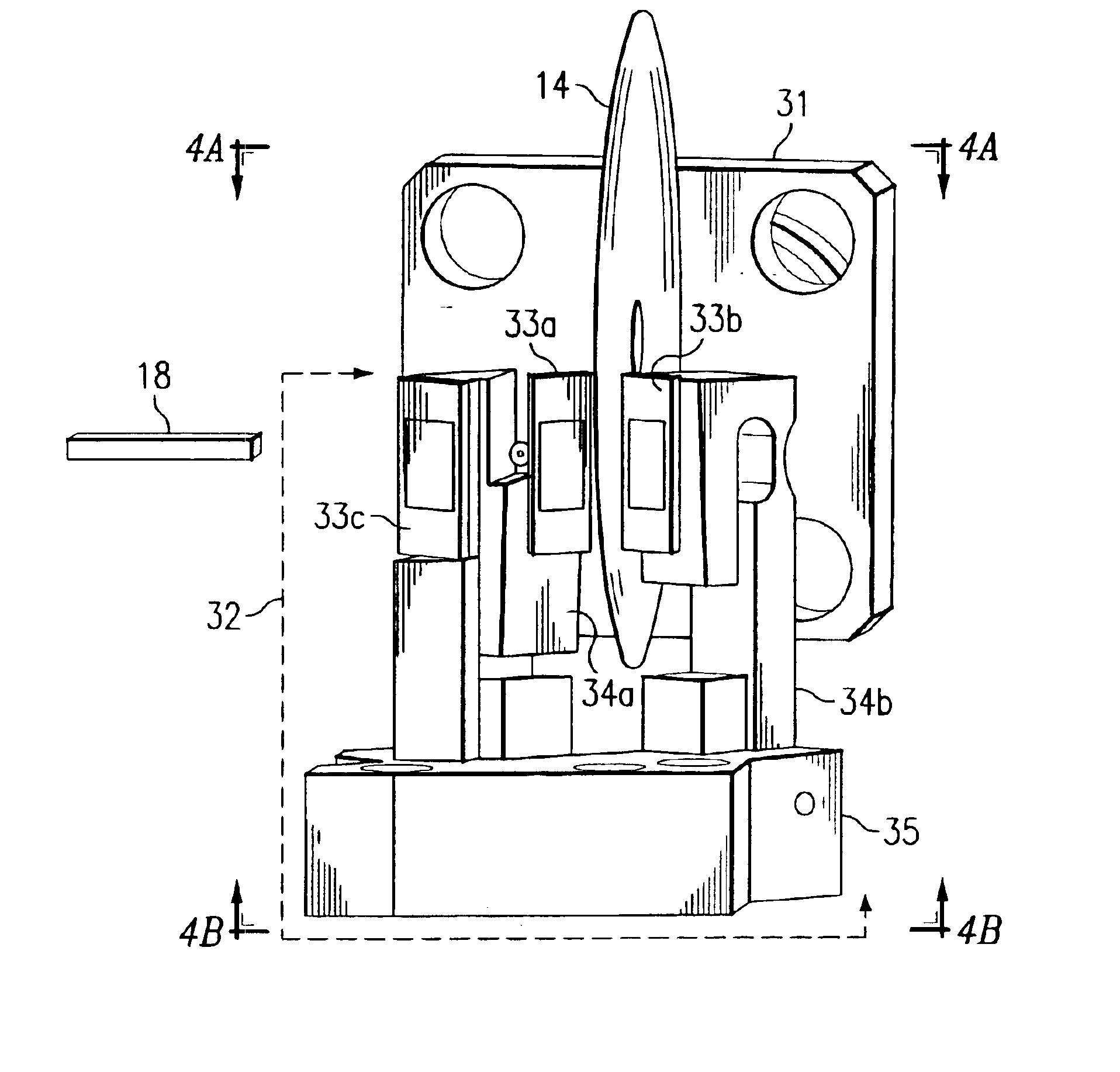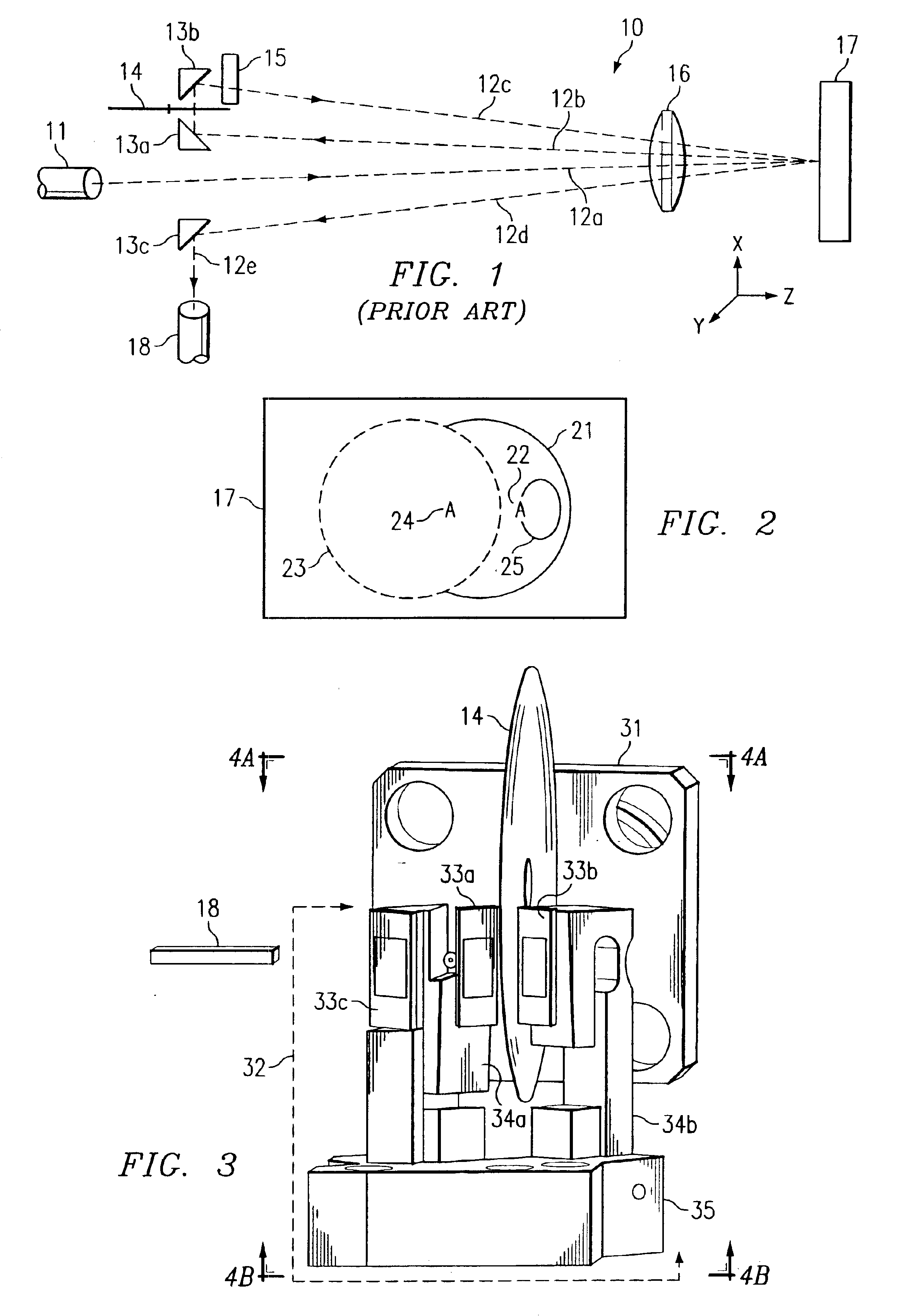Adjustable mirror assembly for polarization dependent loss compensation
a mirror assembly and polarization-dependent technology, applied in the direction of optical radiation measurement, instruments, spectrometry/spectrophotometry/monochromators, etc., can solve the problem of not perfectly balanced net effects of the two halves of the optical spectrum analyzer, and achieve the effect of reducing pdl
- Summary
- Abstract
- Description
- Claims
- Application Information
AI Technical Summary
Benefits of technology
Problems solved by technology
Method used
Image
Examples
Embodiment Construction
Certain system properties facilitate the polarization rotation scheme described in connection with FIG. 1. One such property is that the first pass 12a, 12b of the system physically have the same effective total component reflectance ratio of S / P polarizations as the second pass 12c, 12d. Individual component reflectance values may vary from first pass to second pass, but their aggregate value as used in the ratio is the same. One way of implementing this method is to make the net component reflectance values from the first pass for S and P polarizations respectively the same as in the second pass. Embedded in this property is the desirability of component spatial uniformity. Any optical beam traveling through the OSA will have some spatial extent over which the optical power is distributed. The term spatial extent means the length and width or physical area of the optical component surface where the light is incident. The term spatial uniformity means that the optical component wil...
PUM
 Login to View More
Login to View More Abstract
Description
Claims
Application Information
 Login to View More
Login to View More - R&D
- Intellectual Property
- Life Sciences
- Materials
- Tech Scout
- Unparalleled Data Quality
- Higher Quality Content
- 60% Fewer Hallucinations
Browse by: Latest US Patents, China's latest patents, Technical Efficacy Thesaurus, Application Domain, Technology Topic, Popular Technical Reports.
© 2025 PatSnap. All rights reserved.Legal|Privacy policy|Modern Slavery Act Transparency Statement|Sitemap|About US| Contact US: help@patsnap.com



